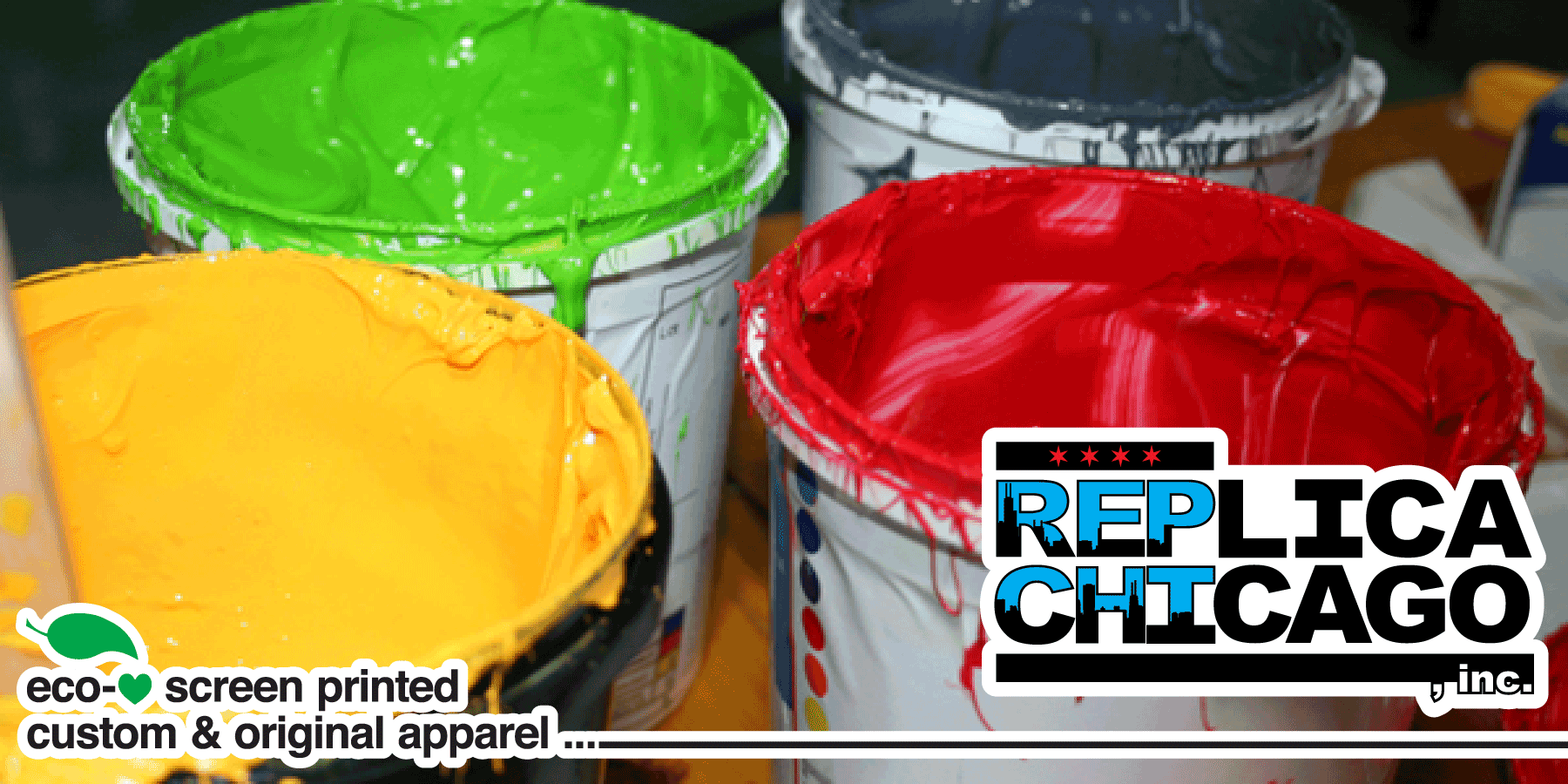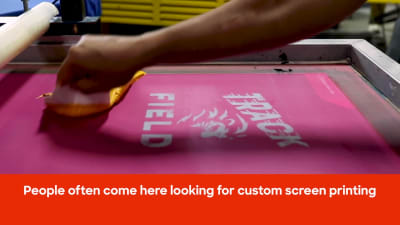Understanding Silk Display Printing: Tips and Techniques for Creating Stunning Designs
If you're aiming to understand silk screen printing, you'll need even more than simply interest. It calls for a strong understanding of techniques, the right tools, and careful preparation. You'll find exactly how to prepare your art work and deal with usual concerns that can emerge throughout the procedure. By the end, you'll prepare to produce sensational styles that reflect your one-of-a-kind design. Initially, allow's check out the vital basics that lay the foundation for your success.
Understanding the Basics of Silk Display Printing
Silk display printing, typically called screen printing, is a functional approach for moving layouts onto different materials. You'll find it's optimal for publishing on fabrics, paper, plastic, and a lot more. The procedure entails producing a stencil, or screen, that permits ink to pass via only in specific areas, generating tidy and vivid styles.
To get going, you'll require to prepare your artwork, guaranteeing it's in an ideal style. screen printing kit. You'll layer your screen with a light-sensitive solution and expose it to light as soon as you've obtained your style ready. This action develops a pattern of your design on the screen
After washing out the unexposed solution, you're readied to publish. Straighten your display over your material, use ink, and use a squeegee to push the ink via the screen. It's all regarding technique and persistence, so do not be reluctant to experiment and fine-tune your strategy as you go.
Necessary Devices and Materials You'll Need
To start with silk screen printing, you'll need a couple of standard supplies like screens, squeegees, and ink. You can check out innovative equipment that improves your printing high quality and performance once you're comfortable. Let's discuss what you'll require to guarantee your jobs succeed from the beginning.
Basic Silk Screen Materials
Beginning on a silk display printing project needs a couple of crucial tools and materials to ensure your success. You'll require a silk screen framework, which holds the mesh that moves your layout. A squeegee is vital for pressing ink with the screen onto your substrate. Don't forget the ink itself; select colors that suit your design and the material you're publishing on. A source of light is critical for exposing your display, along with emulsion to develop your pattern. You'll additionally require an appropriate office, preferably one that's well-lit and complimentary from dust. Stock up on cleansing materials to preserve your tools and maintain your displays in good condition. With these essentials, you prepare to dive into your project!
Advanced Printing Devices
When you prepare to take your silk screen printing to the next degree, spending in innovative printing devices can make a significant difference. A top notch display printing machine is crucial; try to find a multi-color press that permits precise registration and quicker production. You'll likewise intend to upgrade to a much more efficient direct exposure device to ensure your designs are sharp and dynamic.
Consider purchasing a trustworthy warm resource, like a conveyor dryer, for also curing of inks. Do not ignore specialized inks; water-based and discharge inks provide superb results on numerous fabrics. An excellent set of mops and emulsion scoop coater will certainly streamline your procedure, offering your designs that expert side.
Preparing Your Artwork for Printing
Preparing your art work for silk display printing is vital to attaining vivid, specialist outcomes. Begin by verifying your style is in the ideal style-- vector data like.AI or.EPS job best.
When your data is prepared, create a different layer for each and every shade in your style. This'll make it much easier throughout the printing process. Don't neglect to include enrollment marks to line up colors properly.
Additionally, take into consideration the mesh count of your screen; better information may require a greater mesh count. Finally, conserve your artwork with a resolution of at the very least 300 DPI to assure crisp prints. By adhering to these actions, you'll set on your own up for a successful printing experience and bring your designs to life perfectly.
The Screen Printing Process: Step-by-Step
Since you've prepared your art work, it's time to concentrate on the display printing process itself. You'll begin by preparing your screen, why not check here guaranteeing it awaits the ink application. From there, you'll explore numerous printing techniques to achieve the very best results for your task.
Preparing Your Screen
Obtaining your display all set is a vital action in the silk display printing procedure. As soon as dry, place your transparency on the display and make use of a light resource to reveal the layout. After direct exposure, clean out the unexposed solution, and you'll have your screen prepared for printing.
Printing Strategies Described
Once your display is prepared, you can dive right into the exciting process of printing. Initially, location your display on your substrate-- whether it's textile, paper, or an additional product. Protect it to avoid any activity. Next, put your ink onto one side of the screen and use a squeegee to draw the ink throughout the style. Apply also press to assure the ink penetrates via the mesh. Raise the screen very carefully to expose your print. Allow each layer dry before using the next if you're layering shades. Clean your display without delay to stop ink from obstructing the mesh and drying out. With method, you'll grasp the subtleties of stress and timing, which will certainly assist you achieve crisp, vivid styles.
Tips for Getting Vibrant Colors
While accomplishing dynamic colors in silk screen printing might appear difficult, you can easily elevate your designs with a couple of key strategies. Pick high-grade inks particularly made for silk display printing; they supply far better coloring and coverage. Blending inks properly can also boost vibrancy-- experiment with ratios to discover the perfect blend that pops.

Last but not least, do not forget curing your prints appropriately. Appropriate warmth establishing warranties the shades bond with the material, preserving their vibrancy in time. By applying these methods, you'll create spectacular, appealing layouts that truly radiate.
Fixing Usual Printing Problems
Despite vivid shades in your designs, silk display printing can in some cases provide challenges. One common issue is ink blood loss, which frequently occurs when you use too much ink or do not let the previous layer completely dry totally. To prevent this, use a squeegee with just the ideal stress and guarantee each layer is dry before including a lot more.
If your design isn't lining up correctly, ascertain your enrollment marks and make adjustments to your screens. Tidy your displays thoroughly prior to beginning your print run.
Last but not least, if the ink isn't adhering well to the material, think about the textile type and the healing process. Make certain you're using the ideal ink which you're curing it at the ideal temperature. Fixing these usual issues will aid you achieve sensational outcomes.
Trying out Strategies and Effects
Trying out different techniques and impacts can boost your silk display printing projects to new heights. Do not hesitate to push limits! Attempt layering shades for deepness; overlapping hues creates special blends that capture the eye. You can additionally have fun with textures-- using different squeegee strategies or incorporating materials like sponges or brushes includes measurement to your prints.
Think about using specialized inks, such as glow-in-the-dark or metal, to give your designs an unforeseen spin. You could also discover stenciling, where you can reduce detailed layouts for stunning effects.
Don't ignore substrate variations! Printing on materials, timber, or paper can produce different results that improve your job's feeling.
Finally, keep a journal of your experiments. Documenting your successes and failures will guide your future developments and aid you refine your style. Embrace the process, and delight in the journey of discovering what jobs best for you!
Regularly Asked Inquiries
Just how Do I Tidy and Keep My Screen Printing Tools?
To clean up and maintain your screen printing devices, frequently scrub screens with a suitable cleaner, laundry mops after usage, and shop whatever in a completely dry, dust-free setting. Keeping points neat guarantees much better prints and longer-lasting tools.

Can I Print on Products Apart From Material?
Yes, you can publish on materials apart from see it here textile! Consider utilizing paper, timber, or plastic. Just make certain your screens and inks are compatible with those surface areas for the very best results. Experiment and have enjoyable!
What Is the Ideal Way to Shop Screens and Inks?
To keep displays and inks successfully, keep displays upright in a cool, completely dry place, and cover them to avoid dust. Shop inks in impermeable containers, away from direct sunshine, to preserve their top quality and uniformity.
How Do I Select the Right Mesh Matter for My Job?
Choosing the ideal mesh count relies on your design's information and ink type. For fine information, go higher, like 200 mesh (screen printing kit). For bold styles, a lower matter, around 110, functions best. Experiment to find your suitable match.
What Are the Environmental Effects of Silk Display Printing?
Silk display printing can have ecological effects, like chemical waste and water usage. You can reduce these by utilizing eco-friendly inks, reusing products, and effectively throwing away chemicals to lower your task's environmental impact.
Silk screen printing, typically called screen printing, is a versatile approach for moving designs onto various products. Align your screen over your product, apply ink, and utilize a squeegee to push the ink via the display.To get begun with silk screen printing, you'll need a couple of fundamental supplies like displays, squeegees, and ink.When you're all set to take your silk display printing to the next degree, investing in advanced printing devices can make a considerable distinction.Getting your screen all set is a vital step in the silk display printing process.